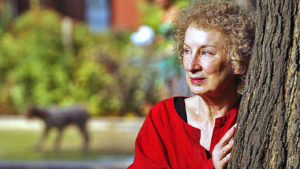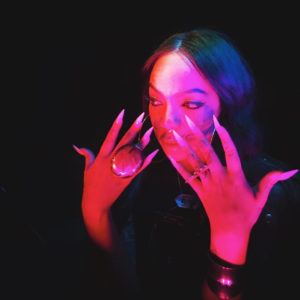American teenagers were forced to confront a very particular existential terror in 1997. It wasn’t your usual horror film, even though it did star Freddie Prinze, Jr. In Too Soon for Jeff he plays a high school senior who gets a crash course in both sex education and adult responsibility when his girlfriend gets pregnant. He doesn’t want to be a father, but it’s not his choice — and when his girlfriend insists on keeping the baby, poor Jeff has to kiss his future goodbye.
The overwrought morality play was shown in Sex Ed classes nationwide. And Jeff’s cautionary tale was hardly unique at the time. As Nineties America struggled with lingering anxieties over the AIDS epidemic and the loosening of sexual mores, the teen pregnancy rate was hitting an all-time high. This mix spawned a national purity panic — and with it, numerous after-school specials and made-for-TV movies that warned impressionable young people about the dangers of premarital sex.
While that message was nominally meant for everyone, we all knew who was really supposed to heed these warnings — and it wasn’t the Jeffs of the world. Girls were the ones in charge of saying no to sex, and it was girls who would suffer the consequences if they didn’t — in the form of not just unintended pregnancy but a reputational hit. Sex for guys was a biological drive; for girls, it was a mark of bad character, low morals, and an utter lack of self-respect.
And yet, even as Freddie Prinze, Jr begged the young women of the late Nineties not to ruin his life by sleeping with him, there was something else happening on television that spoke to better (and less prudish) days ahead. The year after Jeff hit screens, Sarah Michelle Gellar made her debut in a very different sort of teen drama — one with more cultural staying power than every after-school special combined. Twenty five years ago this week, Buffy the Vampire Slayer was born.
At first glance, Buffy was not just an archetype but a stereotype: the ditzy blonde cheerleader who, if she wasn’t ruining her boyfriend’s life by getting knocked up, was always getting stabbed to death within the first 15 minutes of your favourite horror franchise. But Buffy flipped the script: this cheerleader wasn’t slain. She slayed.
It’s important to understand just how shocking this was for the era, and how intentionally absurd. Just the words, Buffy the Vampire Slayer were a joke: when previews for the movie hit cinemas in 1992, audiences exploded in laughter the moment the announcer said the title aloud. And when the TV adaptation arrived in 1997, the whole enterprise still struck everyone as frankly goofy. In a representative review, The New York Times declared, “Nobody is likely to take this oddball camp exercise seriously, though the violence can get decidedly creepy.”
Of course nobody took Buffy seriously: that was not only the point, but the secret to her success. Critics and vampires alike learned to underestimate her at their own peril. Buffy not only broke ground by turning every horror trope in the book on its head, she spawned an obsession with Strong Female Characters that would grip Hollywood for the next decade.
And the show’s gloss of hardcore girl power — including a teen heroine who made no apologies for being sexually active — was subversive as hell at a moment when Britney Spears was vowing to remain virginal until marriage. Not only did Buffy sleep with Angel — her brooding, emo vampire boyfriend — in the second season of the show, but she kept on slaying after the act of love caused him to callously dump her, and go on a killing spree.
Absurd as it sounds, for an audience of young women, this felt not just serious, but resonant. Buried inside the horror story was a real and legitimate fear: that inside every seemingly nice guy is a horny jerk who just wants one thing. And for a show to allow a teen female character to express sexual desire without getting either pregnant or murdered — and to allow her to suffer a broken heart without turning into a broken person — was unheard of in 1998. While the Too Soon for Jeff genre of storytelling depicted sexually active girls as selfish, depraved temptresses who would ruin a good boy’s life by getting knocked up, Buffy’s resolute refusal to shame its heroine was a breath of fresh air.
It didn’t end there. When Buffy finally hung up her stakes after a seven-year run, she wasn’t just personally rejecting sexism, but campaigning against it. Her last battle was against the patriarchy, literally, in the form of a demonic spirit called The First Evil, which had possessed the body of a very Bible-thumping preacher called Caleb — a piquant little plot twist no doubt meant as a jab at religious conservatives, including the one in the White House.
In a final twist, Buffy’s feminism turned out to be not just overt, but intersectional. Rather than dying a hero’s death and becoming a martyr to the cause, she used witchcraft to dismantle the system. “In every generation one Slayer is born — because a bunch of men who died thousands of years ago made up that rule”, Buffy tells her army, before changing that rule. Her legacy: a mass sisterhood of vampire-killers who would fight on after the show’s cancellation.
For a long time, Buffy was one of the few massively popular products of the late Nineties that wasn’t retroactively problematised, which is unusual considering the current cottage industry of middle-aged millennials suddenly discovering that all the stuff they loved as teenagers isn’t nearly woke enough to pass muster. (Other entries from this era, including the 1999 Woodstock revival concert, the raunch comedy franchise American Pie, and the sitcom Friends, haven’t been so lucky.) The girl-power gloss that made the vampire slayer a subversive cult figure by last century’s standards also gave her a pass in this one.
But if Buffy the Vampire Slayer was a feminist hero, she was also, undeniably, a male fantasy: the ass-kicking action hero men wanted to be, dressed up as the feminine archetype they wanted to be with. And, of course, Buffy was literally man-made — by Joss Whedon, whose feminist credentials were unimpeachable, so everyone said. In 2006, he was presented with the Equality Now award for his contributions to women’s advancement by none other than Meryl Streep, and his self-congratulatory speech from that night is something to behold.
Then came poetic justice. After coasting on his Buffy bona fides, the past finally caught up with the director in 2017, when he was #MeTooed for a lifetime of bad behaviour. The allegations included callous and abusive behaviour toward writers, as well as multiple extramarital affairs on set and cruel mistreatment of actress Charisma Carpenter during the Buffy years. Whedon was toppled by a generation of women who had grown up being inspired by the characters he created. But the tragedy is that, when Whedon fell, everything he’d touched — including Buffy — was left tarnished.
For those with complicated feelings about the art vis-a-vis the artist, this anniversary is marked not just by nostalgia, then, but by yearning: for Buffy to break free, a Pinocchio cutting the strings that tie her to her creator. After all, in recent years real women have done it with the bad men who “made” them: Gwyneth Paltrow disavowing Harvey Weinstein, Taylor Swift taking on Big Machine. And Sarah Michelle Gellar, who brought Buffy to life for years, last year drew a bright circle of protection around herself and the vampire slayer, leaving Whedon on the outside.
It’s impossible to separate him entirely from Buffy; he did make her, after all. It’s just that — as in the case of poor, sad Jeff — that doesn’t count for much once the thing you’ve made takes on a life of its own.
Disclaimer
Some of the posts we share are controversial and we do not necessarily agree with them in the whole extend. Sometimes we agree with the content or part of it but we do not agree with the narration or language. Nevertheless we find them somehow interesting, valuable and/or informative or we share them, because we strongly believe in freedom of speech, free press and journalism. We strongly encourage you to have a critical approach to all the content, do your own research and analysis to build your own opinion.
We would be glad to have your feedback.
Source: UnHerd Read the original article here: https://unherd.com




